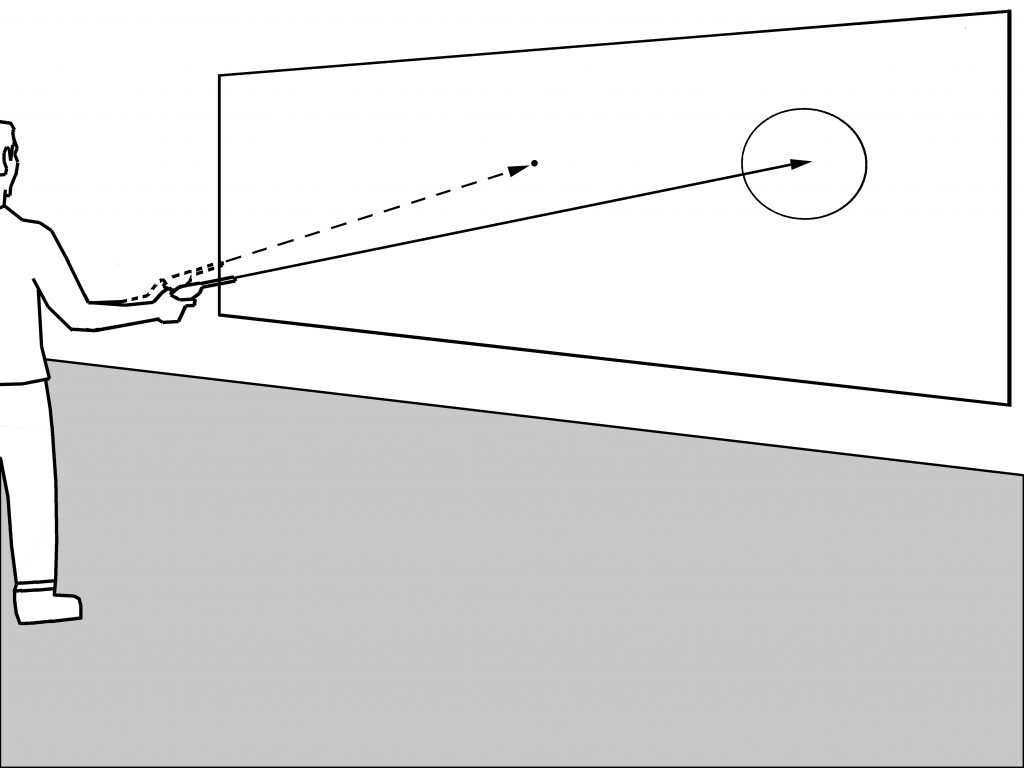
Recently, many interactive systems allow the user to interact while standing up and walking around, by pointing his hand or input device directly at the display from a distance. We call this type of input direct pointing at a distance, or, in short, direct pointing, and distinguish it from other methods of indicating a location on a display, such as direct touching using touch screens or indirect cursor control using a mouse.
One important aspect of direct pointing is that it has inherent precision issues, due to hand jitter, lack of a supporting surface, and the difficulty of acquiring small targets from a remote position. To accommodate for such lack of precision, direct pointing techniques often include enhancements to allow higher precision.
Details
The goal of our research is twofold: understanding how humans perform in direct pointing and providing direct pointing design guidelines and interaction techniques.
By understanding how humans perform through direct pointing, we are able to develop design guidelines for applications and interaction techniques that reduce the difficulty of tasks of selecting and dragging objects directly from a distance. We hypothesize that, to select a target, both its visual representations, as well as the arm/hand motor precision required to select it are significant factors in the difficulty of a direct pointing task.
Initial Results
We have proposed and derived a model of human performance for direct pointing at a distance based on the results of an empirical study. The angular amplitude of movement and angular target width are the main parameters of the model, with the angular target width being weighed more heavily than the angular movement amplitude. The paper describing this model is currently under review for publication.
We developed a prototype interaction technique that serves as an illustration of a direct pointing technique for which our model would predict good performance. This technique improves motor precision by increasing the control/display ratio of the pointing task, such that a large wrist rotation corresponds to a small cursor movement, by the toggle of a high-precision button in the input device. The technique also improve visual acuity by increasing the size of the area around the cursor when the high-precision mode is activated.
Future Work
We are designing an experiment that will check the effect of visual angular width of targets in direct pointing performance. We hypothesize that the quality of the visual feedback affects direct pointing performance, especially in the presence of high C/D ratios with very small targets.
Journal Articles
A human motor behavior model for distal pointing tasks Journal Article
In: International Journal of Human-Computer Studies, vol. 68, no. 10, pp. 603 - 615, 2010, ISSN: 10715819.
